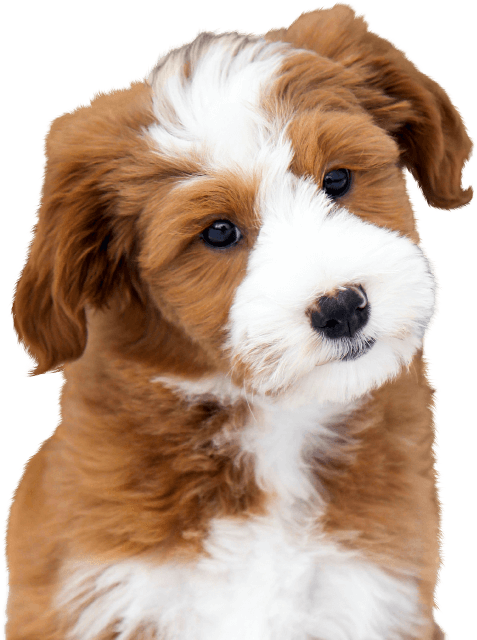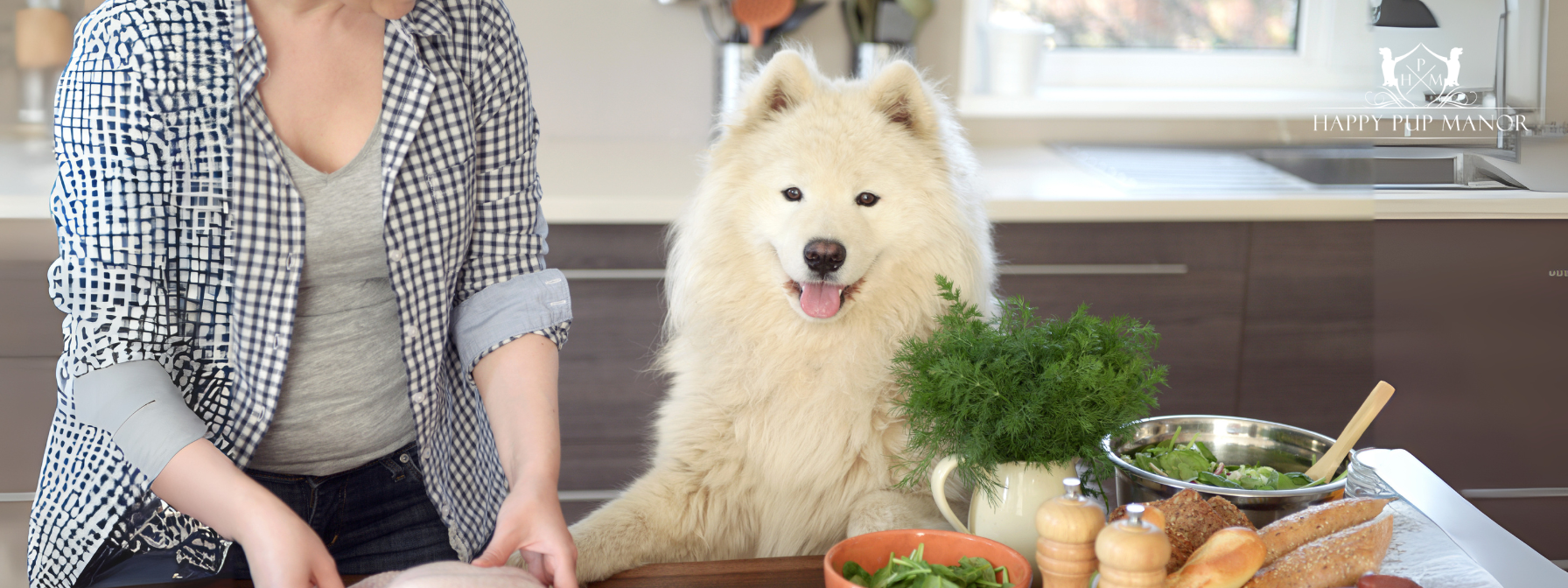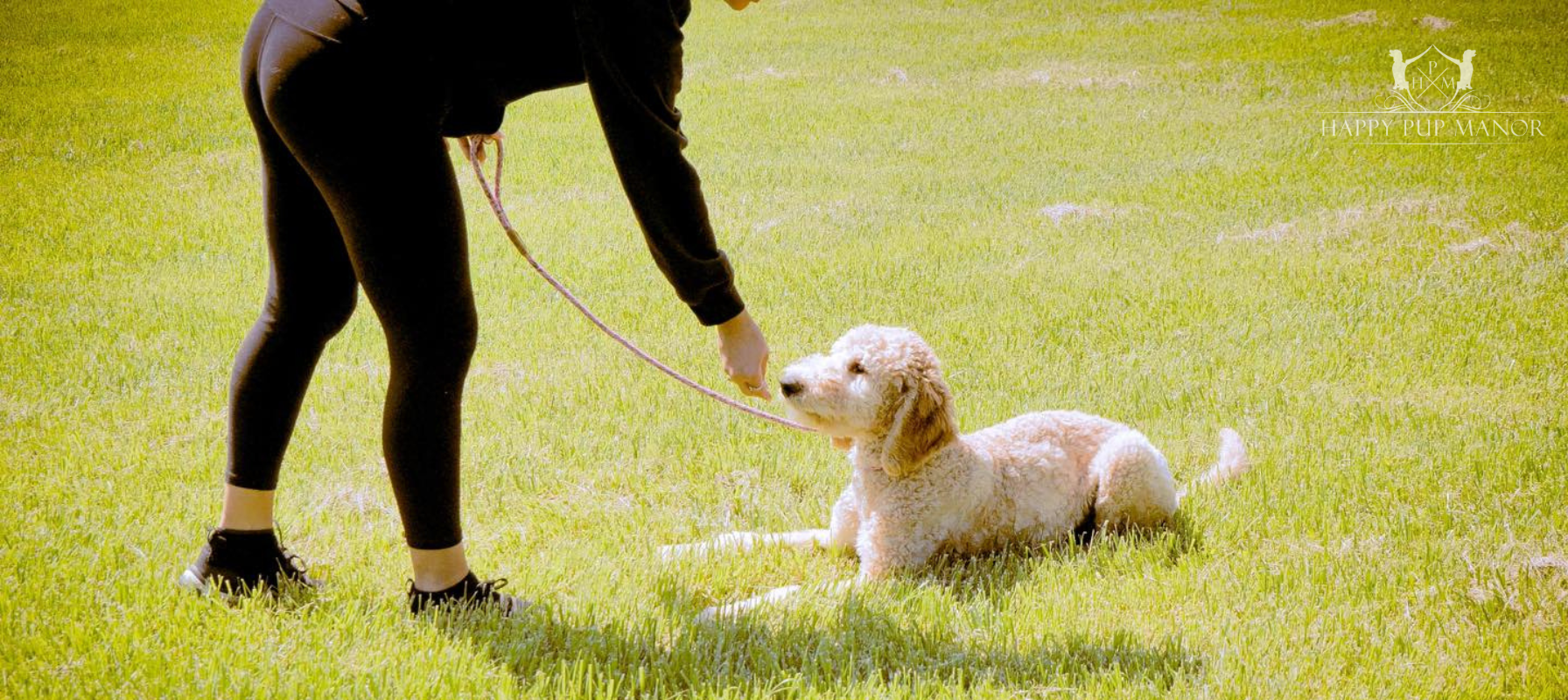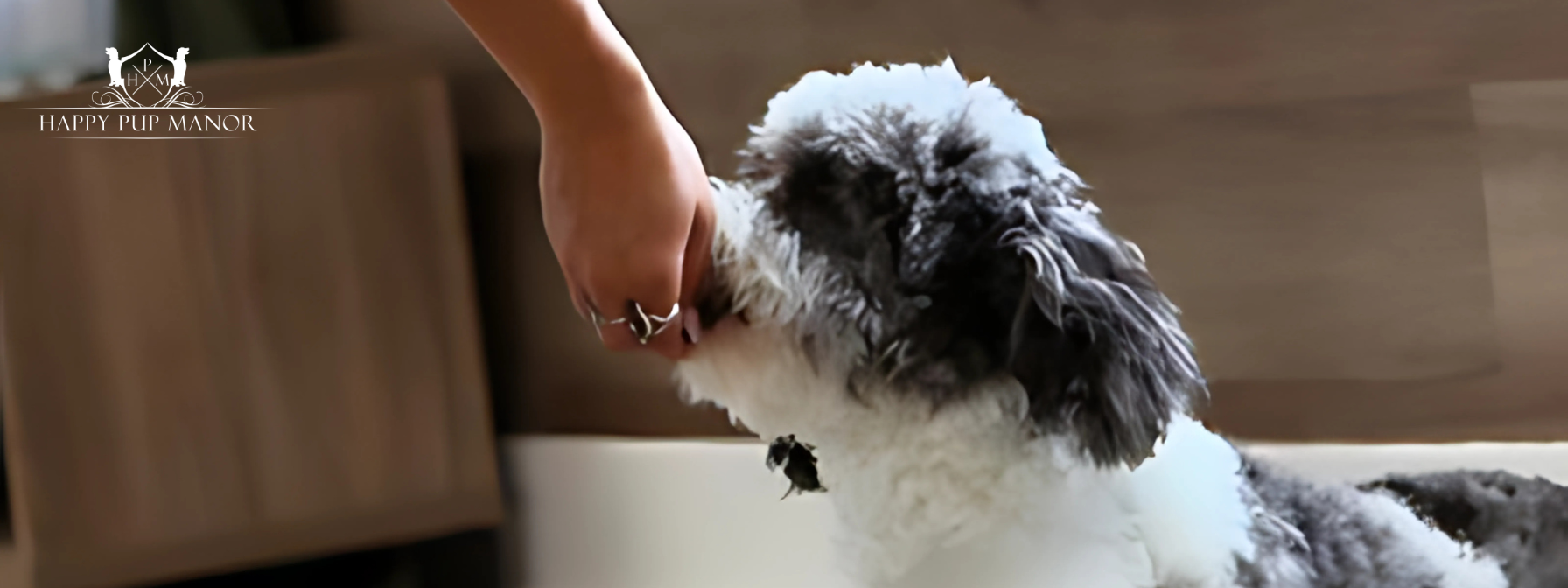How To Introduce Your New Puppy To Your Dog?

How To Introduce Your New Puppy To Your Dog?
Bringing home a new puppy is fun and exciting, but it can also be nerve-wracking if you already have older family dogs at home. How are they going to react when they meet? What if your old dog doesn’t like your new pup? Will your pup be scared of the bigger ones?
While dogs and puppies are social animals and are often comfortable with others, dogs have different personalities. Some dogs may find it easier to welcome a new member to their group, while others might feel that their space is invaded and reject the new puppy.
To avoid making any of your dogs feel uncomfortable during the meeting, it is important that you take your time and use effective ways to create a great meeting experience for your pets. Happy Pup Manor knows how challenging and exciting this time is, so we have made a comprehensive guide for you!
Prepare a Separate Space for Your New Pup
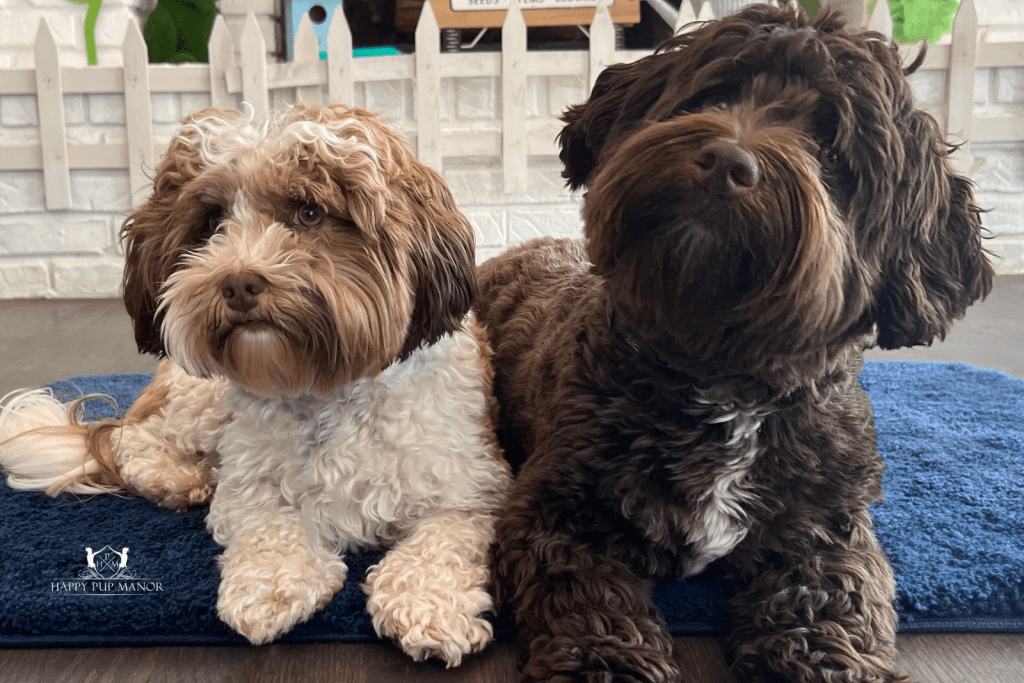
The last thing you would want to make your current family dog feel is that he is being replaced by a new puppy. No matter how sociable and friendly your family dog is, you should also consider that he also needs time to adjust to a new family member.
With this, one of the first steps you should take is to prepare a separate space for your new puppy.
- Choose an appropriate area for your new puppy: Choose a room or section of a room that is easily accessible and can be monitored frequently. This area should be away from any potential hazards, such as stairs or sharp objects. Keeping the puppy’s adjustment period in mind, selecting a space that can be easily cleaned in case of any accidents is also advisable.
- Clear the space: Remove any potentially dangerous or valuable items, such as toxic plants, cables, or fragile objects. Puppy-proof the area by ensuring there are no reachable small objects, chemicals, or electrical cords.
- Make the area warm and cozy: Use a crate or a dog bed with soft bedding to ensure your puppy feels comfortable and secure. This will provide a safe spot for your puppy to retreat to. Consider placing some of your puppy’s toys or blankets in the den to make the space more familiar and inviting. This will help your puppy feel more at ease in its new environment.
- Set up food and water stations: Designate a specific spot in your puppy’s area for their food and water bowls. When selecting bowls, ensure they are appropriate for the puppy’s size and have a solid base to prevent it from moving around while your pup is eating or drinking.
- Provide appropriate bathroom facilities: If your puppy is still being house-trained, try to establish a specific area for potty breaks. You can place puppy pads or create a temporary indoor toilet area in one corner of the space, like a litter box or an artificial grass pad. This will help confine any accidents and contribute to the puppy’s progress in potty training.
- Consider baby gates or barriers: Depending on the layout of your home, you may need to install baby gates or use barriers to restrict the puppy’s access to certain areas until they are fully acclimated. This will help prevent any potential danger and give the existing dog and new puppy enough time to adjust to each other’s presence without constant interaction.
Read: Tips on Effectively Introducing Your New Pup To Your Home
Facilitate Controlled Interactions

Now that you have created a separate space for your pup, you should start gradually introducing them to each other. You must be very patient and exercise control so your dogs feel comfortable in every interaction until they are comfortable enough.
- Introduce scents: Before they interact, allow your pups to become familiar with each other’s scent by rubbing a blanket or towel on one pet and placing it in the other pet’s area. This will help them get accustomed to each other’s scent and simplify the introduction process.
- Controlled visual introduction: To introduce two animals to each other, it’s a good idea to use a baby gate or playpen to create a physical barrier between them. This will allow them to see each other without any direct contact, helping them become familiar with each other’s presence in a controlled and safe manner.
- Positive association: During the initial introduction, reward both dogs for calm behavior to create a positive association with each other’s presence. Give them treats and words of praise for positive behavior.
- Controlled physical introduction: Once you notice that your dogs are comfortable with the visual introduction, you can proceed with letting them meet each other without the gate. Make sure to keep them on a leash at first from opposite ends of the room, then gradually bring them closer.
- Supervise the interactions: Keep the interactions short and supervised during the first meetings. Take note to observe the body language and behavior of both dogs so you can confirm that both are comfortable with each other. Once you notice any signs of discomfort or aggression, separate them from each other until the next day.
- Increase interaction time gradually: When you notice your pups becoming comfortable and friendly with each other, you can start increasing the amount of time they spend together. During this stage, make sure that you still keep your eyes on them in case something unexpected happens.
- Allow your pups to spend time alone: When you are positively sure that they have grown accustomed to each other, you can leave your pups unsupervised, but always remember to check on them from time to time.
- Give individual attention: While focusing on making your pups comfortable with each other, never forget to give time and attention to each one separately. You want to make sure that your pups spend quality time with you individually to prevent any feelings of jealousy and keep the bond with you strong.
Other Tips When Introducing Your Old Dog and Your New Puppy:

- Walk your dogs together: After your old and new dogs have started playing together at home, you can create positive experiences by taking them on outdoor walks together. If you have a bigger dog, you can ask a family member to join you during your routine walks so you won’t get flustered when handling two dogs outside. Take note that your new puppy might become overly excited during your first few walks, so having a companion would be best so you can give equal attention to both of your pups.
- Give them their own treats and toys: When your dogs are still getting used to each other, always make sure they have separate spaces and things. This includes the treats and toys that you give them. You don’t want one pup to become envious of the other’s toy and end up trying to “steal” it. Having their own things would make them feel that they are equally loved.
- Don’t reprimand or shout: If one of your dogs becomes aggressive towards the other, the best approach is to separate them and put them in different rooms where they won’t see each other in the meantime. While some dogs are open and friendly, there are some who can be a bit dominating, especially if they feel that their own space is being invaded. Never shout at any of your dogs since this will make them feel that they are being punished and may no longer want to get near the other dog.
- Ensure both dogs get plenty of exercise and mental activities: Both dogs should have plenty of exercise and mentally stimulating activities every day. Hence, their focus is not on each other all the time. Engaging in various activities would keep their minds stimulated and also help redirect their energy to these activities.
- Seek professional help: If, after weeks of trying to introduce your dogs to each other, they still haven’t warmed up, consider seeking professional help. Your first step would be to visit your vet to check for any underlying health reasons causing your dogs to behave that way.
- Enroll your pups in boarding and training: New puppies that are overly active or noisy can be off-putting for families with older dogs, especially if they prefer the quiet life they had before the new pup came. Rowdy puppies can be difficult to manage, especially if they haven’t been given obedience training, so you may want to consider getting your new puppy boarded and trained. For example, the Happy Pup Manor training program has many training activities that teach pups how to behave, follow commands, and engage with other dogs. With this, it will be easier for you to control your pup when you introduce him to your older dogs since it won’t be running around the place.
When introducing your pets to each other, it’s important to remember that every animal is unique and may require a different approach. Some dogs may become friends right away, while others may need more time to adjust.
To ensure a successful introduction, you should be patient, use positive reinforcement, and prioritize the safety and well-being of both pets throughout the process. By taking a kind and understanding approach and focusing on positive experiences, you can help foster a strong bond and harmonious relationship between your furry friends.
